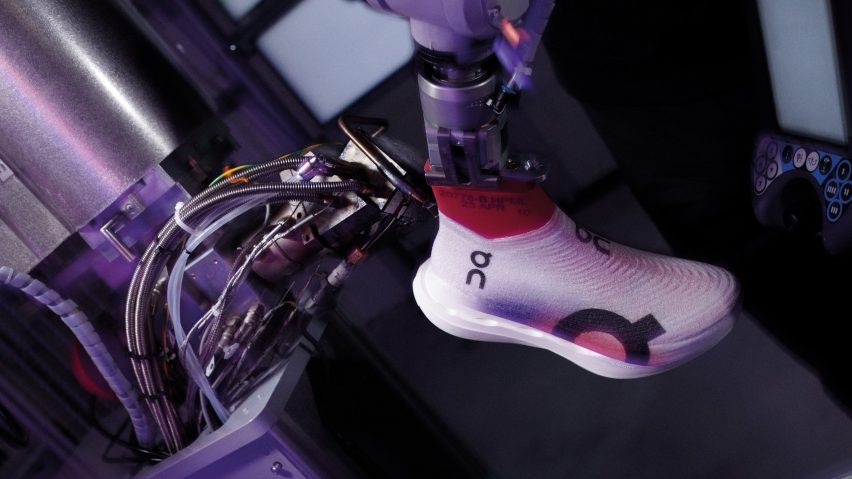
On unveils sprayable trainer made with textile "there's not even a word for"
Swiss brand On has unveiled the Cloudboom Strike LS trainer, which is topped with a lightweight, low-carbon upper created by spraying filament using a robotic arm and will debut at the Olympics.
The Cloudboom Strike LS is On's first shoe that incorporates an upper made using its sprayable technology, which the company has named LightSpray.
The trainers can be produced in three minutes with the upper sprayed onto a foam-rubber and carbon fibre sole.
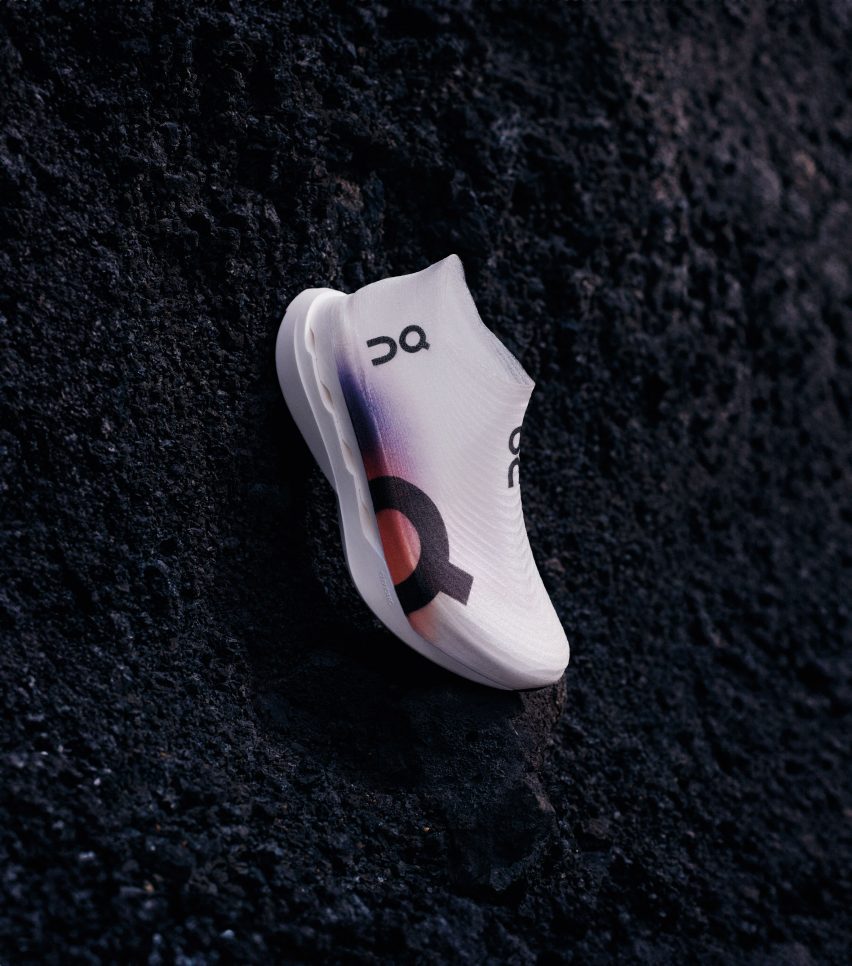
"LightSpray is our new high-performance technology and the special thing is that it's basically making an upper in only one production step using our own engineered and developed technology, fully automated, within three minutes," said On director of innovation, technology and research Nils Altrogge.
"The upper is not knitted, weaved or other typical technologies that are used in the textile industry, it is sprayed," he told Dezeen.
"So the resulting textile is something completely new, there's not even a word for that."
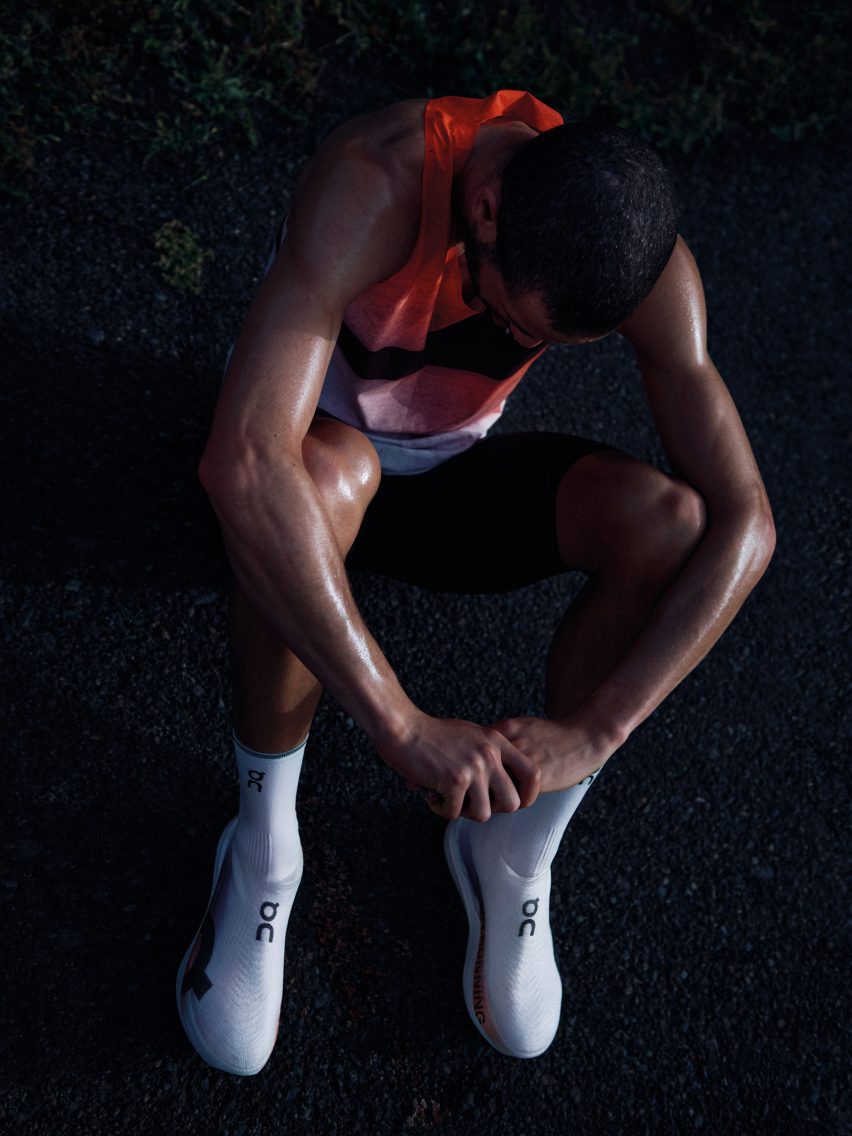
The lightweight upper weighs around 30 grams, with the whole trainer – which is On's lightest – weighing 170 grams.
It will be worn at the Olympics by athletes including Kenyan marathon runner Hellen Obiri, who told the New York Times that she said "I can't run with these" when she first saw them, due to the unusual look.
However, she went on to win the Boston Marathon earlier this year in a prototype and will now be one of several athletes wearing the trainers at the Paris 2024 Olympic Games.

Rather than a standard upper that can be made from 30 to 40 components, the LightSpray upper is made from a single length of thermoplastic filament, which is sprayed onto a mould supported on a robotic arm.
According to On, this single material combined with a much-simplified manufacturing process, contributes to the trainer having "75 per cent fewer carbon emissions than On's other racing shoes".
The upper is connected to the midsole, which has a 40 per cent castor oil content, using thermal fusing technology rather than glue. In total, the trainer only has seven components.
Along with being much faster to create than standard uppers and producing fewer emissions, On believes that the technology has the potential to be incorporated in future circular designs.
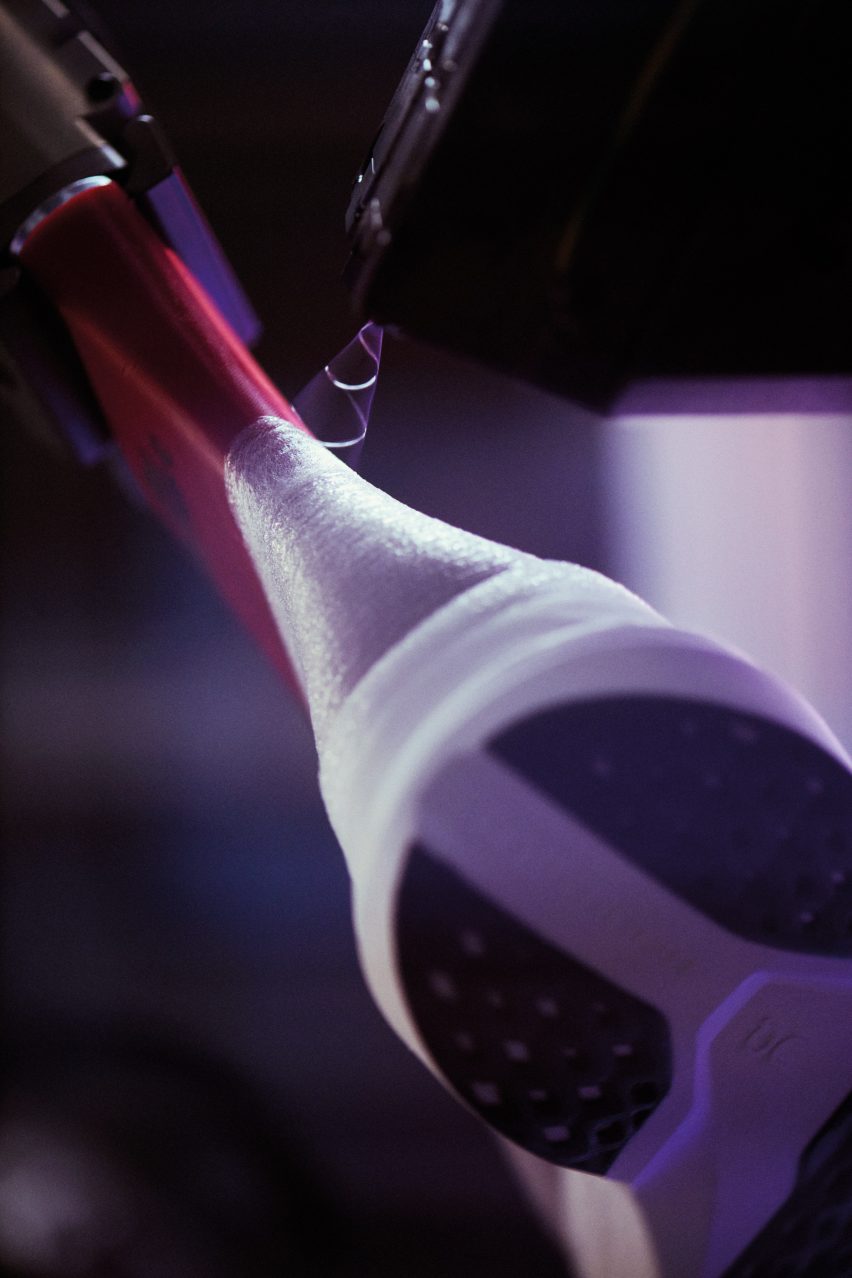
"It's paving the way and it's opening doors, because suddenly we are solving a lot of problems that you have we have with conventional footwear," said Altrogge.
"The exciting thing about it is that it is made from one single filament, which is 1.5 kilometres long."
"It is basically opening up so many options in the future; one of them is definitely its low carbon footprint – 75 per cent less than usual performance upper – and then the full automation opens the door to produce much more close to the market, anywhere anytime," he continued.
"And in addition, because it's only a one-piece system with a thermoplastic material that can be melted and remade, it also paves the way towards new circularity options."
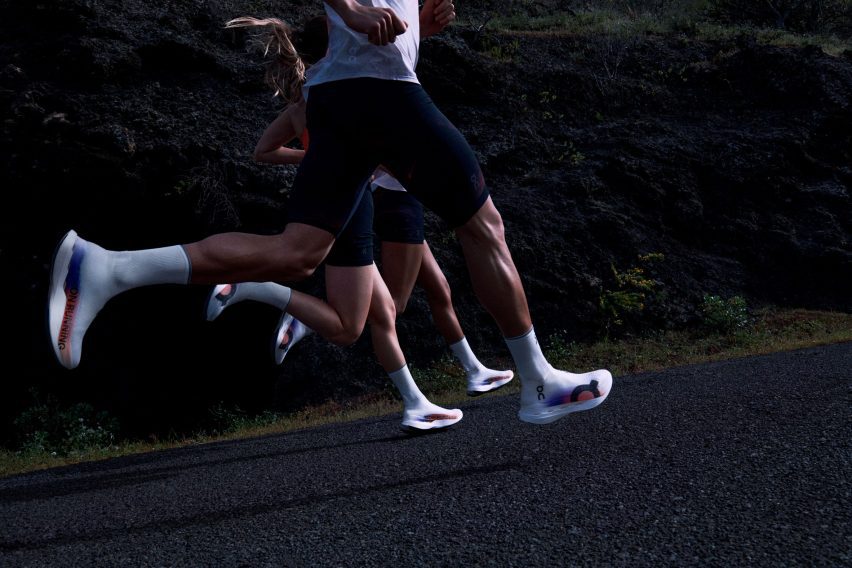
Although the Cloudboom Strike LS trainer results in far fewer emissions than a typical running shoe, Altrogge explained that performance had driven the design.
"Our more sustainable foam and our most sustainable upper technology are our most performant technology for the athletes," he said.
"We have a philosophy at On with different spirits in our culture and one of them is the survivor's spirit, which is keeping the planet always in mind. We never make the question like performance or sustainability – we believe sustainability and performance go hand in hand."
He explained that the fast, on-site manufacturing process also allowed for rapid prototyping to create trainers based on athletes' fit and preferences.
All of the Cloudboom Strike LS trainers are currently made at On's headquarters in Zurich, with the brand set to demonstrate the technology to the public at a pop-up in Paris during the Olympics.
In recent years shoe brands have been innovating to create faster, lighter and less impactful trainers.
While Adidas and Nike are competing to create record-beating trainers, other brands are exploring circularity with On creating a fully recyclable trainer that is available on a subscription model, Vivobarefoot producing a prototype trainer that is 3D-printed from compostable materials and Camper unveiling a modular trainer "simple enough to assemble and disassemble by customers".
The photography is courtesy of On.